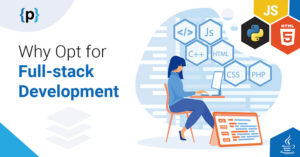More than 18% of the top million websites use it for their infrastructure, making Bootstrap the leading front-end framework among developers.
However, with that popularity could come disadvantages, which you will learn about as you read on. And because of those reasons, you may want to consider using an alternative CSS or front-end framework.
You will first learn what Bootstrap is and why you might use a different program. Afterward, you will find several of the best Bootstrap alternatives that may offer better results for your web development projects.
What Is Bootstrap?
The Bootstrap definition that you will find throughout the internet is a CSS, JS, and HTML framework that Twitter developed that helps you design a mobile-first and responsive website.
However, Bootstrap is a collection of code written in the languages mentioned above. When building your website, you will use specific HTML elements.
To use Bootstrap’s JS and CSS code on your website, you can either load Bootstraps from a content delivery network (CDN) or locally.
Using this framework to launch a prototype or a website will save you significant time since you do not have to write a lot of CSS. Moreover, Bootstrap’s user interface (UI) components deliver a user-friendly experience; thus, resulting in fewer page bounces.
Why Should You Consider a Bootstrap Alternative?
Based on the bootstrap statistics at the beginning of this post, a good portion of websites use the same front-end framework. That means if you were to do the same, your website would look identical to everyone else’s.
Moreover, you would miss out on various features that could enhance your site’s user experience.
You could spend a lot of extra time fine-tuning your website to differentiate it from the others. However, you may find it better to invest your time in searching for frameworks that offer different user interface (UI) components, more speed, and other features.
Best Bootstrap Alternatives
Throughout this section, you will see the various Alternatives to Bootstrap available. Moreover, you will learn about the pros and cons of each alternative framework besides general information.
Afterward, you may have a better idea of what sort of framework you want to use for your next project.
1. Skeleton
Like Bootstrap, Skeleton is a front-end framework that allows you to develop and prototype your projects quicker. This framework uses a clean grid. That way, you can create fully responsive projects.
Moreover, the developer of Skeleton made it beginner-friendly, so it does not have a steep learning curve.
Skeleton framework pros:
- It has a clean syntax and is lightweight
- Best for devices with smaller resolutions
- Great when you use it with small projects
Disadvantages of using Skeleton:
- It does not offer an immense CSS library
- Limited templates
2. Mueller
Mueller is a modular responsive grid system built upon Compass (open-source CSS Authoring Framework) and Sass. With this grid system, you can keep your HTML clean using a grid function instead of adding classes to your HTML elements.
The pros of using Mueller over Bootstrap:
- Creates adaptive and responsive layouts
- Reduces time to build a website or prototype your product
- Allows you to build a module library to use in future projects
Why you may not like Mueller:
- Too much modification with using the grid system can lead to slower websites
- The grid system could lead to complications when fixing bugs later
3. Foundation
Framework is an advanced front-end framework that allows you to launch responsive production codes for your website and prototypes quickly. Moreover, Foundation also has a rich library of UI components, JS plugins, customization, and more.
Here is why should you use Foundation’s framework:
- Friendly with Ruby on Rails
- Plenty of learning materials available
- A massive components library
Here are a couple of reasons to consider a different framework:
- Not as lightweight as other frameworks
- Requires a lot of learning before you can master this framework
4. Materialize
If you are familiar with Google’s Material Design, you will recognize Materialize. It is a front-end framework based on Google’s principles that includes UI components similar to Bootstrap.
However, Materialize components are more visually appealing and lightweight than Bootstrap, making it an excellent choice when designing for a great user experience mixed with aesthetics.
Materialize is best for you who want a full Bootstrap alternative that integrates well with other languages, needs lightweight code and wants to use Material Design on your project.
Why Materialize is a great alternative:
- Smooth transitions and animations
- Materialize developers offer premium themes to enhance your prototyping speed
- Integrates well with Ruby on Rails
Where Materialize could improve:
- Has various issues on Github that have not been addressed
5. Pure CSS
A while back, YAHOO developed its Pure CSS framework to help programmers develop websites without a massive footprint. To provide its styling options for layouts and UI components, Pure uses Normalize.css.
Normalize is a small CSS file that helps preserve cross-browser consistency.
Pure CSS pros:
- Each of Pure’s file sizes does not take up much space, and they are in separate files
- Small footprint (around 4KB)
Pure CSS cons:
- It does not have accompanying Javascript plugins
- Limited CSS selectors
6. Bulma
Bulma is a Bootstrap-inspired framework based on flexbox, which is short for Flexible Box Module. It is also modular, which means you only put what you need within your website. And therefore means that you do not have unnecessary code affecting your website speed.
Reasons to choose Bulma:
- Responsive, mobile-first layout
- Only includes what you need for your site
Why you may not like it:
- Not ideal for bidimensional layouts because Bulma is based on flexbox
- No JS plugins; therefore, not the best Bootstrap alternative
Try a New Framework and Change the Way You Work
After reading through this guide, you may have realized that Bootstrap is not the ideal framework for you. However, various Bootstrap alternatives offer features that mirror Bootstrap components’ functionality.
Do you need programming specialists? Contact us to learn more about our various services. A couple of examples of what we offer include building user-friendly mobile applications and software.




